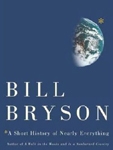Chapter 1 ACKNOWLEDGMENTS
As I sit here, in early 2003, I have before me several pages of manuscript bearing magnificently encouraging and tactful notes from Ian Tattersal of the American Museum of Natural History pointing out, inter alia, that Perigueux is not a wineproducing region, that it is inventive but atouch unorthodox of me to italicize taxonomic divisions above the level of genus and species, that I have persistently misspelled Olorgesaille, a place that I recently visited, and so on similar vein through two chapters of text covering his area of expertise, early humans.
Goodness knows how many other inky embarrassments may lurk in these pages yet, but this thanks to Dr. Tattersall and all of those whom I am about to mention that there arent manyhundreds more. I cannot begin to thank adequately those who helped me in the preparation of this book. I am especially indebted to the following, who were uniformly generous and kindly and showed the most heroic reserves of patience in answering one simple, endlessly repeated question: "Im sorry, but can you explain that again?"In the United States: Ian Tattersall of the American Museum of Natural History in NewYork; John Thorstensen, Mary K. Hudson, and David Blanchflower of Dartmouth College in Hanover, New Hampshire; Dr. William Abdu and Dr. Bryan Marsh of Dartmouth-Hitchcock Medical Center in Lebanon, New Hampshire; Ray Anderson and Brian Witzke of the Iowa Department of Natural Resources, Iowa city; Mike Voorhies of the University of Nebraska and Ashfall Fossil Beds State Park near Orchard, Nebraska; Chuck Offenb surgeon of BuenaVista University, Storm Lake, Iowa; Ken Rancourt, director of research, Mount Washington Observatory, Gorham, New Hampshire; Paul Doss, geologist of Yellowstone National Park, and his wife, Heidi, also of the National Park; Frank Asara of the University of California at Berkeley; Oliver Payne and Lynn Addison of the National Geographic Society; James O.
Farlow, Indiana Purdue University; Roger L. Larson, professor of marine geophysics, University of Rhode Island; Jeff Guinn of the Fort Worth Star-Telegram newspaper; Jerry Kasten of Dallas, Texas; and the staff of the Iowa Historical Society in DesMoines.
In England: David Caplin of Imperial College, London; Richard Fortey, Les Ellis, and KathyWay of the Natural History Museum; Martin Raff of University College, London; Rosalind Harding of the Institute of Biological Anthropology in Oxford; Wellcome Institute; and Keith Blackmore of The Times.
In Australia: the Reverend Robert Evans of Hazelbrook, New South Wales; Alan Thorne and Victoria Bennett of the Australian National University in Canberra; Louise Burke and John Hawley of Canberra; Anne Milne of the Sydney Morning Herald; Ian Nowak, formerly of the Geological Society of Western Australia; Thomas H. Rich of Museum Victoria; Tim Flannery, director of the South Australian Museum in Adelaide; and the very helpful staff of the State Library of New South Wales in Sydney.
And elsewhere: Sue Superville, information center manager at the Museum of New Zealand in Wellington, and Dr. Emma Mbua, Dr. Koen Maes, and Jillani Ngalla of the Kenya National Museum in Nairobi.
I am also deeply and variously indebted to Patrick Janson-Smith, Gerald Howard, Marianne Velmans, Alison Tulett, Larry Finlay, Steve Rubin, Jed Mattes, Carol Heaton, Charles Elliott, David Bryson, Felicity Bryson, Dan McLean, Nick Southern, Patrick Gallagher , Larry Ashmead, and the staff of the peerless and ever-cheery Howe Library in Hanover, NewHampshire.
Above all, and as always, my profoundest thanks to my dear wife, Cynthia.

